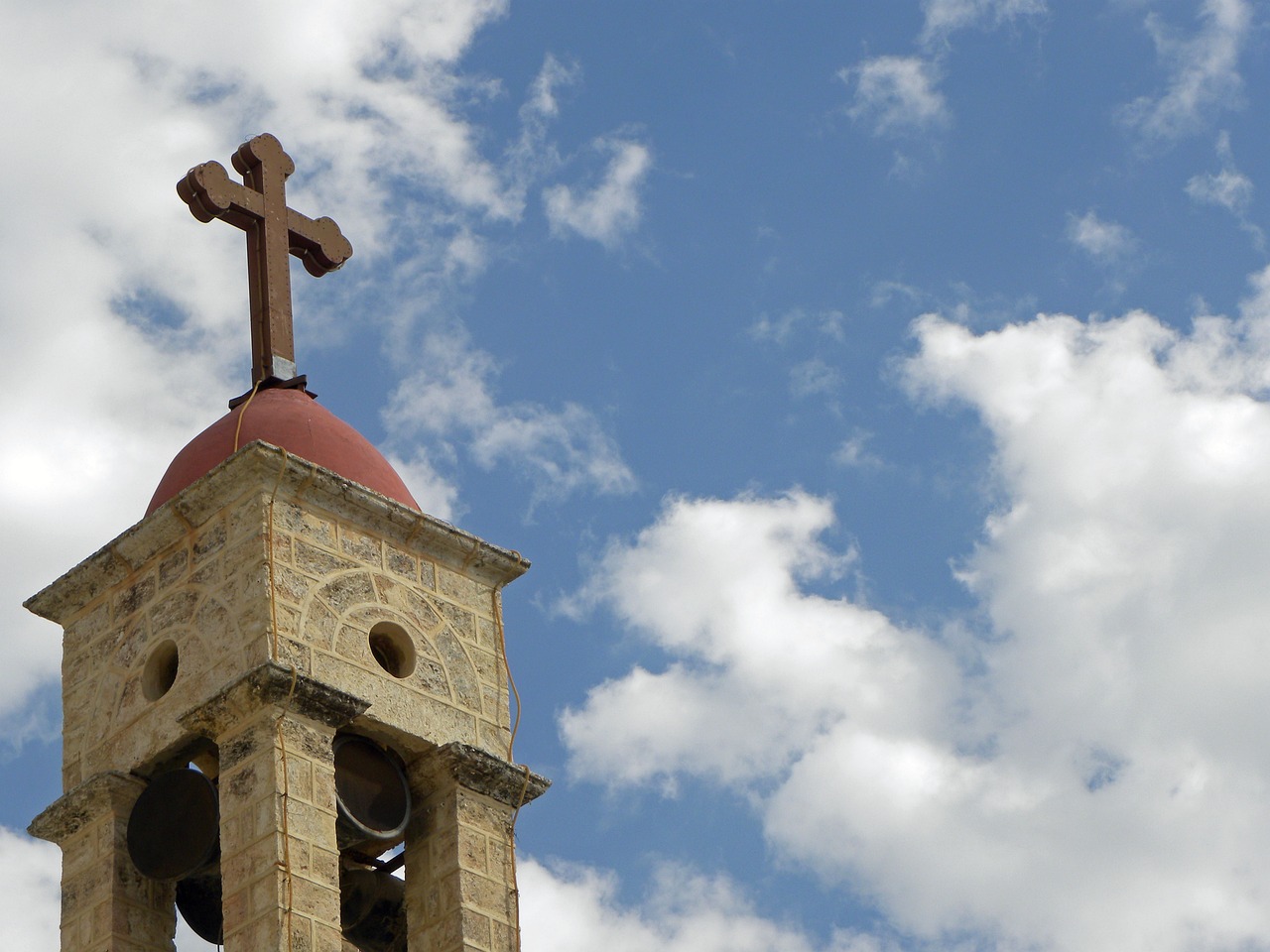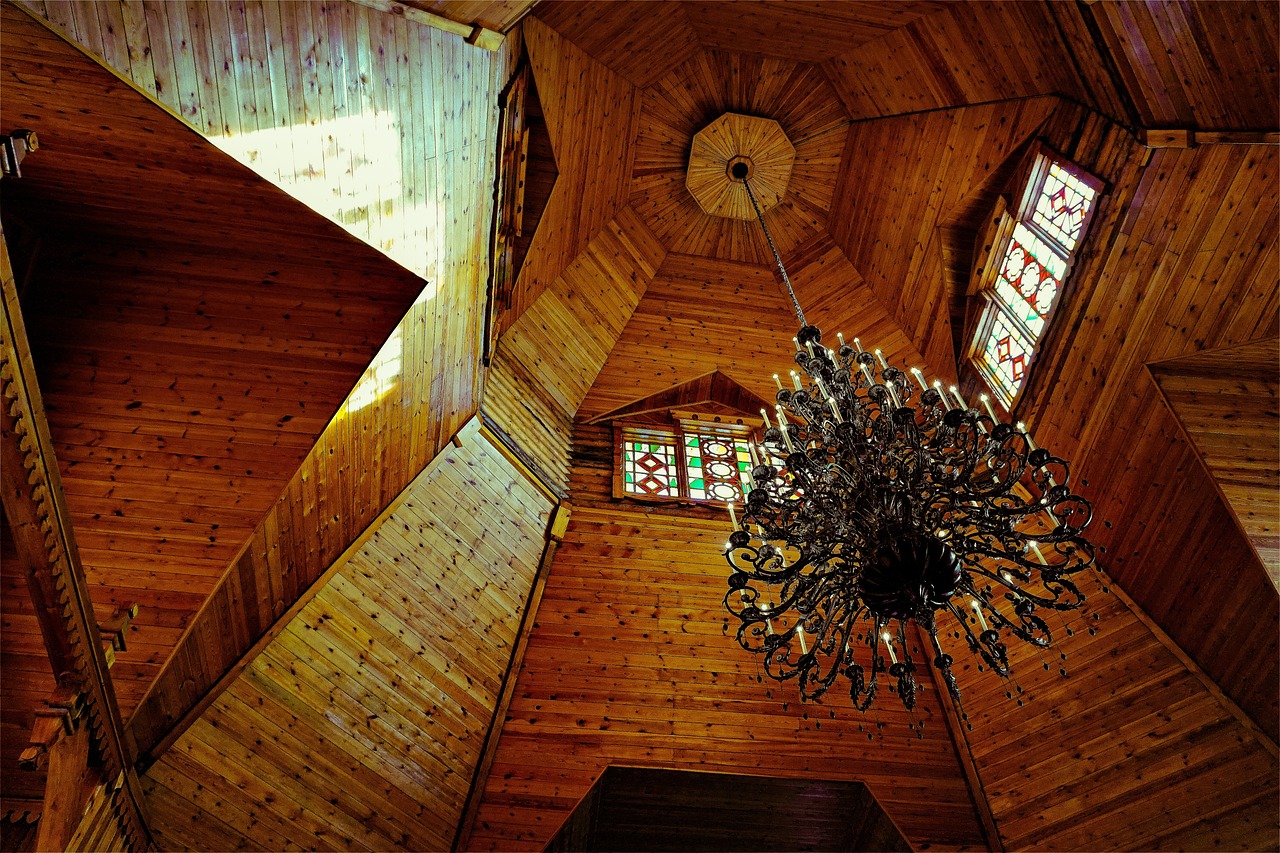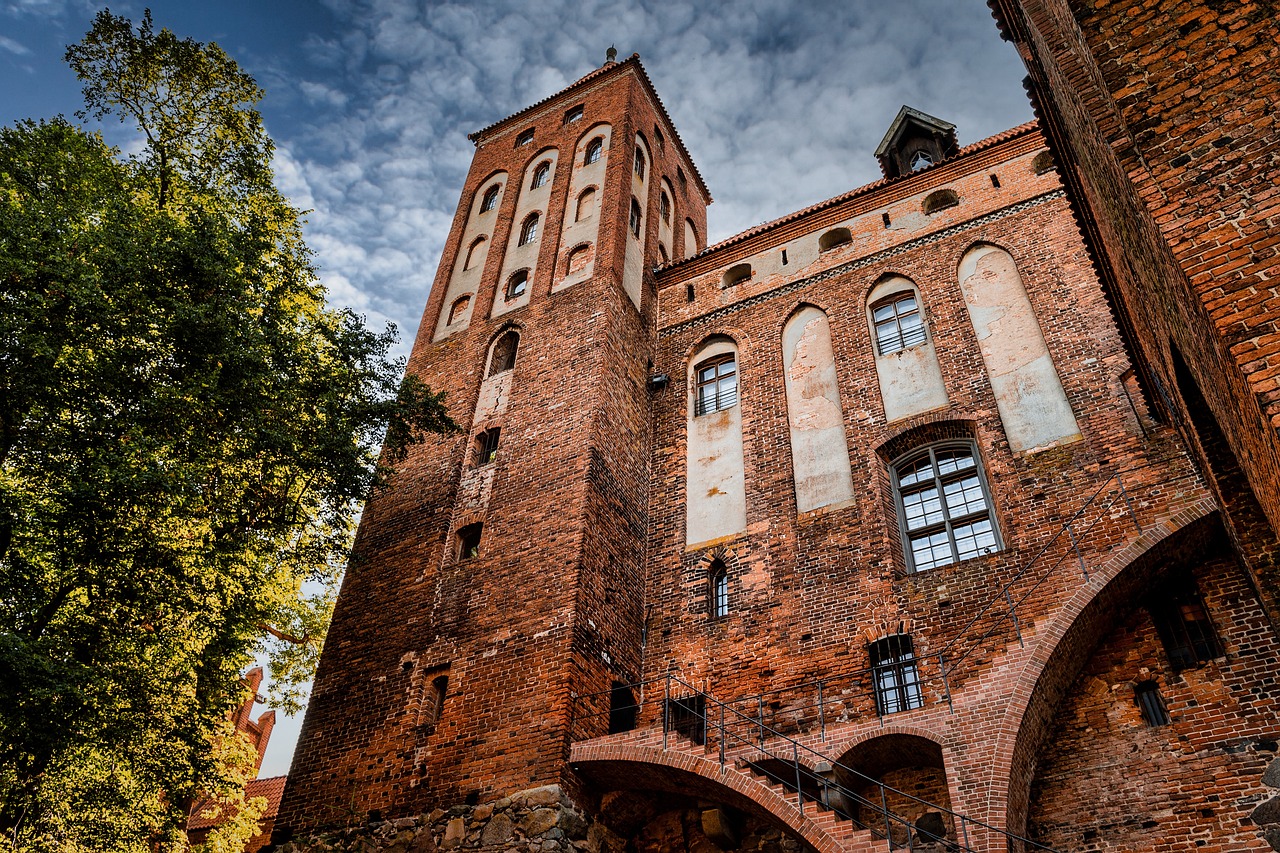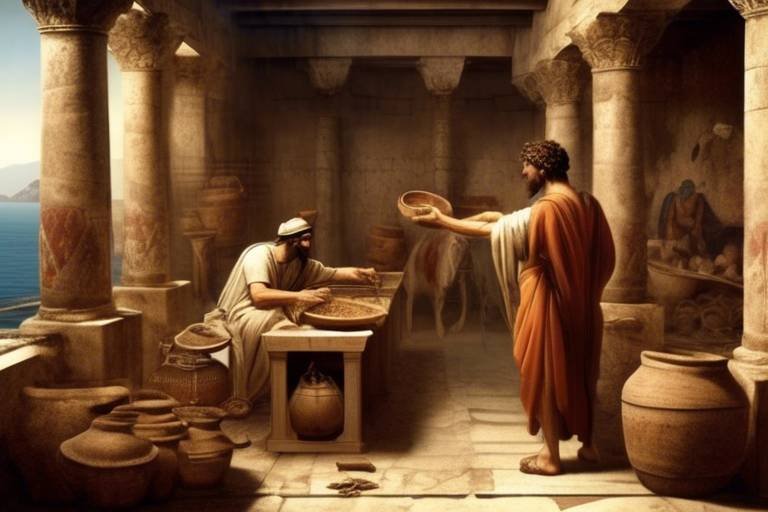The Secrets of Ancient Mediterranean Architecture
When we delve into the world of ancient Mediterranean architecture, we uncover a treasure trove of secrets that have stood the test of time. From the towering columns of Greek temples to the intricate hieroglyphics adorning Egyptian temples, each structure tells a story of innovation, craftsmanship, and cultural significance.
Greek architecture, with its focus on symmetry and proportion, has left an indelible mark on modern design. The majestic Parthenon, with its iconic columns, stands as a testament to the enduring legacy of Greek architectural principles. But beyond its aesthetic appeal, Greek architecture reflects a deep reverence for beauty and balance.
Turning our gaze to the Romans, we are met with a display of engineering prowess that continues to awe us to this day. The grandeur of the Colosseum, the innovation of aqueducts, and the sophistication of amphitheaters all showcase the Romans' mastery of construction and design. It's as if each stone speaks of the empire's ambition and ingenuity.
As we journey to the land of the pharaohs, the mystique of Egyptian temples beckons us with their enigmatic allure. The massive stone blocks, intricate hieroglyphics, and precise alignment with celestial bodies hint at a civilization deeply connected to the cosmos. These temples stand not just as monuments but as gateways to another realm.
Byzantine churches, with their ornate mosaics and domed roofs, transport us to a realm of spiritual beauty and religious symbolism. Each intricate detail tells a story of faith and devotion, inviting us to contemplate the divine through the lens of architectural splendor.
The opulent Persian palaces, adorned with intricate tile work and lush gardens, evoke a sense of luxury and grandeur fit for royalty. From elaborate courtyards to exquisite decorations, Persian architecture reflects a culture that valued beauty and sophistication in every detail.
Carthaginian fortifications, strategically designed to protect ancient cities, demonstrate the importance of defense and security in the ancient world. Utilizing natural terrain and imposing walls, these fortifications stand as a testament to the strategic prowess of the Carthaginians in safeguarding their territories.
On the island of Crete, the Minoans crafted unique architectural wonders characterized by labyrinthine palaces, vibrant frescoes, and advanced plumbing systems. Their architectural style reflects a civilization ahead of its time, blending practicality with artistic expression in a harmonious union.
The influence of the Mediterranean Sea on architectural styles cannot be understated. Trade routes crisscrossing the sea brought together diverse cultural influences, resulting in a rich tapestry of architectural elements from various civilizations. The sea, with its vast expanse, served as a conduit for the exchange of ideas and innovations, shaping the architectural landscape of the region.

The Influence of Greek Architecture
When we think of architecture, one of the first things that come to mind is the enduring legacy of Greek architecture. The Greeks were pioneers in the field, creating structures that have stood the test of time and continue to influence modern design. From the iconic columns of the Parthenon to the principles of symmetry and proportion, Greek architecture has left an indelible mark on the architectural world.
One of the key elements of Greek architecture is the use of columns, which are not only decorative but also serve a structural purpose. The three main types of columns - Doric, Ionic, and Corinthian - have been replicated in buildings around the world, showcasing the timeless appeal of Greek design.
Furthermore, the Greeks placed a strong emphasis on symmetry and proportion in their architectural creations. This attention to detail can be seen in the precise alignment of columns, the balance of elements, and the overall harmony of the structures. The concept of the Golden Ratio, a mathematical proportion believed to be aesthetically pleasing, was often employed in Greek architecture to achieve visual perfection.
Moreover, Greek architectural principles have influenced various architectural styles throughout history. The idea of harmony and balance in design, as well as the use of ornamentation and sculptural elements, can be traced back to the innovations of ancient Greek architects.
In conclusion, the influence of Greek architecture on modern design cannot be overstated. Its emphasis on order, beauty, and timelessness continues to inspire architects and designers worldwide, proving that the legacy of Greek architecture is truly immortal.

The Wonders of Roman Engineering
When it comes to engineering marvels, the Romans stand out for their incredible feats that still awe us today. The grandeur of Roman architecture is evident in iconic structures like the Colosseum, a testament to their advanced engineering skills and innovative design. The amphitheaters built by the Romans not only showcased their architectural prowess but also served as venues for entertainment and social gatherings, reflecting the importance of community in Roman society.
One of the most impressive achievements of Roman engineering is the aqueduct system. These intricate networks of channels and pipes were designed to transport water from distant sources to urban centers, ensuring a stable water supply for public baths, fountains, and private residences. The engineering ingenuity behind the aqueducts allowed the Romans to create thriving cities with sophisticated infrastructure that supported their growing population.
Moreover, the Romans were masters of structural engineering, as seen in the construction of their bridges and roads. The Roman roads, known for their durability and straight paths, connected distant parts of the empire and facilitated trade, communication, and military conquests. The bridges built by the Romans, such as the Pont du Gard in France, exemplify their expertise in using arches and concrete to create enduring structures that have stood the test of time.
Another remarkable aspect of Roman engineering is the design of their thermal baths. These elaborate complexes not only provided a place for relaxation and socializing but also showcased the Romans' understanding of hydraulics, heating systems, and architectural aesthetics. The Baths of Caracalla in Rome, with their massive vaulted ceilings and intricate mosaics, are a testament to the luxury and sophistication of Roman bathhouses.
In conclusion, the wonders of Roman engineering continue to inspire awe and admiration for the ingenuity and craftsmanship of ancient builders. From the grand amphitheaters to the intricate aqueducts, Roman engineering has left a lasting legacy that shapes our understanding of architecture and infrastructure to this day.

The Mystique of Egyptian Temples
Exploring the architectural marvels of the ancient Mediterranean region, including the techniques, materials, and cultural influences that shaped these iconic structures.
Discover the enduring legacy of Greek architecture on modern design, from the iconic columns of the Parthenon to the principles of symmetry and proportion.
Explore the engineering feats of the Romans, from the grandeur of the Colosseum to the innovation of aqueducts and amphitheaters.
Uncover the mystical allure of Egyptian temples, with their intricate hieroglyphics, massive stone blocks, and alignment with celestial bodies.
Egyptian temples are not just structures; they are portals to a mystical world where gods and pharaohs coexist. The grandeur of these temples lies not only in their sheer size but also in the intricate details carved into every stone. Hieroglyphics adorn the walls, telling stories of ancient myths and rituals that have captivated historians for centuries. The alignment of these temples with celestial bodies reflects the Egyptians' deep connection to the cosmos, blending the earthly with the divine.
Delve into the ornate beauty of Byzantine churches, known for their intricate mosaics, domed roofs, and religious symbolism.
Marvel at the opulent Persian palaces, characterized by intricate tile work, lush gardens, and elaborate courtyards.
Learn about the strategic fortifications of Carthage, including the use of natural terrain and defensive walls to protect ancient cities.
Explore the unique architectural style of the Minoans, with their labyrinthine palaces, colorful frescoes, and advanced plumbing systems.
Understand how the Mediterranean Sea influenced architectural styles, trade routes, and the blending of cultural elements across ancient civilizations.

The Beauty of Byzantine Churches
When it comes to architectural beauty and religious symbolism, Byzantine churches stand out as true marvels of the ancient Mediterranean region. These churches are renowned for their intricate mosaics that adorn the walls and ceilings, depicting scenes from religious texts and historical events with stunning detail and vibrant colors. The domed roofs of Byzantine churches are not only architecturally impressive but also symbolize the heavens and the divine above. Each dome is a masterpiece of engineering and artistry, creating a sense of awe and reverence for worshippers and visitors alike.
One of the most striking features of Byzantine churches is their use of religious symbolism in every aspect of their design. From the placement of windows to the arrangement of columns, every element carries a deeper meaning related to the Christian faith. The use of gold leaf and precious stones in the mosaics and iconography adds a sense of opulence and grandeur to the interiors, reflecting the spiritual richness of the Byzantine Empire.
Furthermore, the architecture of Byzantine churches often incorporates elements from various cultures and traditions, reflecting the empire's diverse influences and cosmopolitan nature. The blending of Roman, Greek, and Oriental styles creates a unique and harmonious aesthetic that is both majestic and inviting. Visitors to these churches can witness a fusion of artistic traditions that transcend time and geography, offering a glimpse into the rich cultural tapestry of the Byzantine world.
Moreover, the use of light and space in Byzantine churches is masterful, with carefully placed windows and openings designed to create a sense of ethereal beauty and spiritual transcendence. The play of light and shadow enhances the mystical atmosphere of these sacred spaces, inviting contemplation and meditation. The vast interiors of Byzantine churches, with their soaring arches and intricate details, inspire a sense of wonder and humility in the presence of something greater than oneself.
In conclusion, the beauty of Byzantine churches lies not only in their architectural grandeur but also in the spiritual depth and cultural richness they embody. These sacred structures are not just buildings but living testimonies to the faith, artistry, and ingenuity of the Byzantine civilization. Visiting a Byzantine church is not just a journey through history but a transcendent experience that connects the past with the present, inviting us to marvel at the enduring legacy of this remarkable architectural tradition.

The Splendor of Persian Palaces
When it comes to architectural opulence and grandeur, the Persian palaces stand out as true marvels of craftsmanship and design. These palaces, adorned with intricate tile work, lush gardens, and elaborate courtyards, showcase the rich cultural heritage and artistic prowess of the ancient Persian civilization.
The Persian palaces were not merely structures; they were statements of power, wealth, and sophistication. The attention to detail in every aspect of their construction, from the ornate decorations to the carefully planned layout, reflects the importance placed on aesthetics and luxury by the Persian rulers.
One of the defining features of Persian palaces is the use of elaborate tile work, known for its vibrant colors and intricate patterns. These tiles, meticulously crafted and arranged to create stunning mosaics, adorned the walls, ceilings, and floors of the palaces, adding a touch of splendor to every corner.
Moreover, the Persian palaces were surrounded by lush gardens, carefully landscaped to create a serene and picturesque setting. These gardens, complete with flowing water features, fragrant flowers, and shady trees, provided a peaceful retreat for the palace residents and served as a symbol of abundance and prosperity.
Additionally, the layout of Persian palaces often featured elaborate courtyards, open spaces that served as central gathering points for social and ceremonial activities. These courtyards, enclosed by intricately carved columns and arches, provided a sense of grandeur and magnificence, inviting visitors to marvel at the architectural splendor.
In conclusion, the splendor of Persian palaces lies not only in their physical beauty but also in the cultural significance and historical legacy they represent. These architectural wonders continue to captivate and inspire us, offering a glimpse into a bygone era of luxury, elegance, and artistic excellence.

The Legacy of Carthaginian Fortifications
Carthage, the ancient city-state of great strategic importance, was renowned for its innovative fortifications that played a crucial role in its defense and expansion. The Carthaginians were masters of utilizing the natural terrain to their advantage, often integrating hills, cliffs, and bodies of water into their defensive structures. These fortifications were not merely walls and gates but intricate systems designed to withstand sieges and protect the city from external threats.
One of the most famous Carthaginian fortifications is the legendary walls of Carthage, which surrounded the city and served as a formidable barrier against invading forces. These walls were constructed with precision and skill, utilizing large stone blocks to create a solid defense that stood the test of time. The strategic placement of watchtowers and gates allowed for effective monitoring and control of movement in and out of the city, showcasing the military prowess of the Carthaginians.
Moreover, Carthage's fortifications were not limited to the city itself but extended to its harbors and ports, ensuring the safety of maritime trade routes and naval activities. The Carthaginians understood the importance of protecting their sea access, as it was vital for their economic prosperity and military strength. The combination of land and sea fortifications made Carthage a formidable power in the ancient Mediterranean region.
Carthaginian fortifications also reflected the cultural and architectural influences of the region, blending elements of Phoenician, African, and Mediterranean styles. The use of local materials, such as limestone and sandstone, added a unique character to the structures, showcasing the craftsmanship and ingenuity of Carthaginian builders. The intricate carvings and decorations found on the walls and gates of Carthage displayed a rich artistic tradition that emphasized both beauty and functionality.
Overall, the legacy of Carthaginian fortifications serves as a testament to the military innovation and strategic vision of the ancient city-state. These structures not only protected Carthage from external threats but also symbolized its power and influence in the Mediterranean world. The remnants of Carthaginian fortifications continue to fascinate historians and archaeologists, offering insights into the complex society and architecture of this ancient civilization.

The Charms of Minoan Architecture
The Minoan architecture, originating from the ancient civilization of Crete, holds a unique charm that captivates historians and architects alike. Characterized by labyrinthine palaces, vibrant frescoes, and advanced plumbing systems, Minoan architecture showcases a blend of functionality and artistic expression. The intricate layout of the palaces, such as the renowned Palace of Knossos, reflects a society with a sophisticated understanding of urban planning and social organization.
One of the most intriguing aspects of Minoan architecture is the colorful frescoes that adorned the walls of palaces and villas. These vivid paintings depicted scenes of daily life, religious ceremonies, and nature, providing a glimpse into the Minoan culture and beliefs. The use of vibrant colors and intricate details in these frescoes showcases the artistic prowess of Minoan craftsmen and their dedication to beautifying their living spaces.
Furthermore, the Minoans were pioneers in implementing advanced plumbing systems in their architecture. The presence of elaborate drainage systems, aqueducts, and indoor plumbing in Minoan palaces demonstrates their engineering ingenuity and commitment to improving sanitation and hygiene. This technological advancement set the Minoans apart from other ancient civilizations and contributed to their reputation as innovators in architectural design.
Moreover, Minoan architecture incorporated elements of nature and spirituality, with courtyards and open spaces designed to harmonize with the surrounding environment. The use of light wells, open-air spaces, and interconnected rooms created a sense of unity with nature, reflecting the Minoans' reverence for the natural world and their belief in the interconnectedness of all things.
In conclusion, the charms of Minoan architecture lie in its intricate palaces, vibrant frescoes, advanced plumbing systems, and harmonious integration with nature. The legacy of Minoan architecture continues to inspire architects and historians, offering a glimpse into a civilization that valued art, innovation, and sustainability in its architectural creations.

The Maritime Influence on Mediterranean Architecture
Exploring the architectural marvels of the ancient Mediterranean region reveals a rich tapestry of history, culture, and innovation. From the enduring legacy of Greek architecture to the engineering feats of the Romans, each civilization has left its mark on the architectural landscape. Let's delve into the techniques, materials, and cultural influences that shaped these iconic structures.
Discover the enduring legacy of Greek architecture on modern design. The iconic columns of the Parthenon stand as a testament to the Greeks' mastery of proportion and symmetry. Their architectural principles have influenced countless buildings around the world, showcasing a timeless elegance that continues to inspire architects today.
Explore the engineering feats of the Romans, known for their grandeur and innovation. The Colosseum, a symbol of Roman power and entertainment, showcases their mastery of construction and design. The aqueducts and amphitheaters demonstrate their ingenuity and engineering prowess, highlighting the Romans' ability to create monumental structures that have stood the test of time.
Uncover the mystical allure of Egyptian temples, where massive stone blocks were intricately carved and aligned with celestial bodies. The hieroglyphics that adorn these temples tell stories of ancient gods and pharaohs, offering a glimpse into the spiritual beliefs of the Egyptians. The precision and artistry of their construction continue to captivate historians and visitors alike.
Delve into the ornate beauty of Byzantine churches, characterized by intricate mosaics, domed roofs, and religious symbolism. These architectural wonders served as centers of worship and artistic expression, reflecting the Byzantine Empire's rich cultural heritage. The blend of Eastern and Western influences created a unique architectural style that remains iconic to this day.
Marvel at the opulent Persian palaces, renowned for their intricate tile work, lush gardens, and elaborate courtyards. These architectural marvels were symbols of power and luxury, showcasing the wealth and sophistication of the Persian Empire. The blend of artistry and functionality in Persian architecture continues to inspire awe and admiration.
Learn about the strategic fortifications of Carthage, where natural terrain and defensive walls were utilized to protect ancient cities. The Carthaginians' military expertise and engineering skills are evident in the layout of their fortresses, which played a crucial role in safeguarding their territories. The legacy of Carthaginian fortifications highlights the importance of defense and strategic planning in ancient architecture.
Explore the unique architectural style of the Minoans, known for their labyrinthine palaces, colorful frescoes, and advanced plumbing systems. The Minoan civilization's sophisticated urban planning and artistic achievements set them apart in the ancient world. Their architectural innovations reflect a society that valued creativity, aesthetics, and practicality in equal measure.
Understand how the Mediterranean Sea shaped architectural styles and cultural exchange across ancient civilizations. The sea served as a vital trade route, facilitating the exchange of ideas, materials, and architectural techniques. The blending of diverse cultural influences along the Mediterranean coast gave rise to unique architectural forms that reflected the interconnectedness of civilizations. From the use of marine motifs in design to the adaptation of building techniques suited to coastal environments, the maritime influence on Mediterranean architecture is a testament to the dynamic nature of architectural evolution.
Frequently Asked Questions
- What are the key features of ancient Mediterranean architecture?
Ancient Mediterranean architecture is characterized by a variety of unique features such as intricate mosaics, grand columns, advanced engineering techniques, and a strong influence of cultural and religious symbolism.
- How did Greek architecture influence modern design?
Greek architecture has left a lasting impact on modern design through its emphasis on symmetry, proportion, and the use of iconic elements like columns. Many contemporary buildings still draw inspiration from the architectural principles of ancient Greece.
- What engineering feats are associated with Roman architecture?
Roman architecture is renowned for its impressive engineering feats, including the construction of massive structures like the Colosseum, the development of aqueducts to transport water over long distances, and the innovative design of amphitheaters for entertainment purposes.
- What makes Egyptian temples so mystical?
Egyptian temples are shrouded in mystique due to their intricate hieroglyphics, massive stone blocks, and precise alignment with celestial bodies. These temples served as sacred spaces for religious ceremonies and rituals.
- How did the Mediterranean Sea influence architectural styles?
The Mediterranean Sea played a crucial role in shaping architectural styles by facilitating trade routes, cultural exchanges, and the blending of design elements from various ancient civilizations. This maritime influence is evident in the architectural diversity of the region.



















